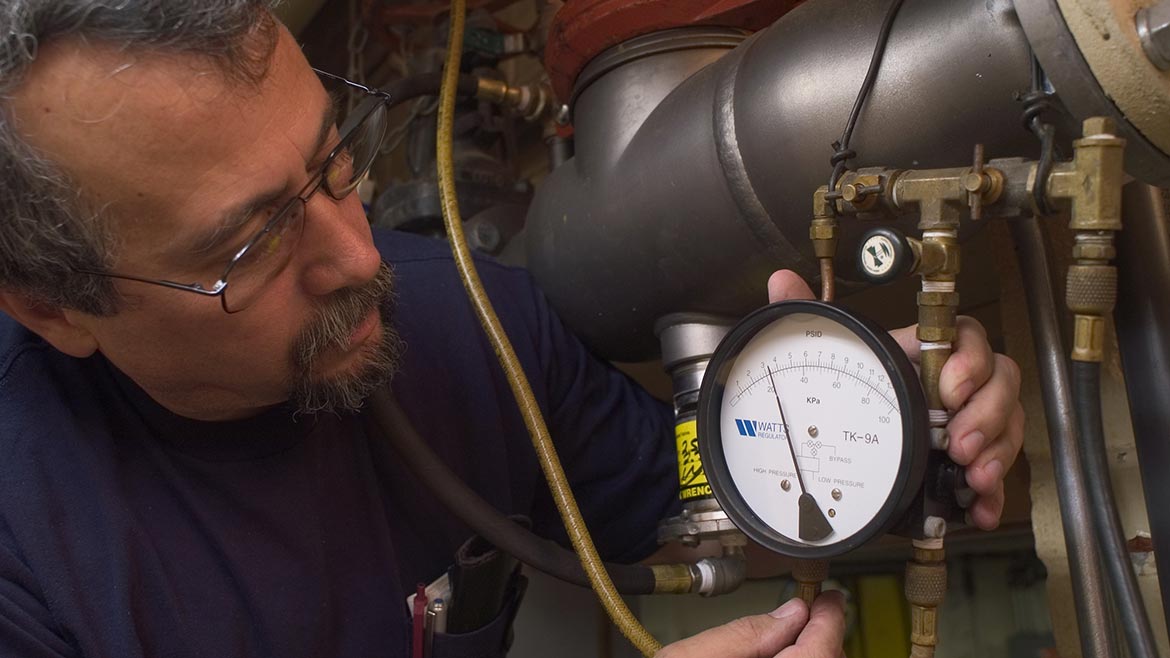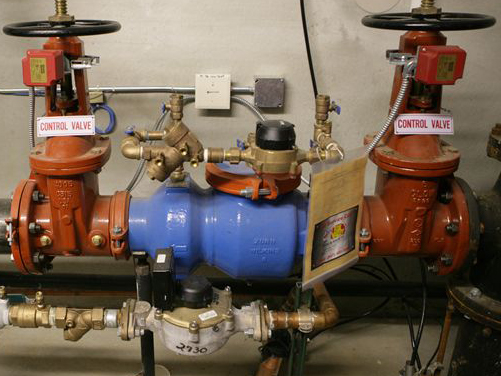Should I Check for Backflow in My Water
Should I Check for Backflow in My Water
Blog Article
We have found this great article relating to Backflow Testing listed below on the net and reckoned it made sense to talk about it with you in this article.

Yes, you need to backflow test your residence's water to ensure that the water is free of contaminants as well as hazardous levels of chemicals. You need to not try to perform backflow screening on your own because of the devices needed as well as area for error. We suggest that you call a professional plumber every couple of years to evaluate your water.
What is Backflow?
In short, heartburn is when water moves upwards-- the opposite instructions in the plumbing system. This is also referred to as "backpressure." When the water relocates this direction, it can mix with unsafe toxins and pose a threat.
What Causes Backflow?
A typical cause of heartburn is a loss of water stress that causes the water to siphon back right into the water supply. After some time, there is a loss in water stress as well as the hose pipe starts to suck the water back right into the water supply. As you can envision, there are currently chemicals from the paint that are getting in the water supply, possibly posing a threat.
Backflow Testing is Needed by Regulation in Specific Cities
Depending upon where you live, you could in fact be needed by law to backflow test your regulation. Iowa City keeps a document of all homes served by the city's water supply. The city calls for that specific "high-hazard" facilities undergo backflow screening. In some cases, properties such as residences as well as apartment are influenced.
You Can Stop Backflow
The main function of a backflow device is to avoid water from flowing backwards right into your water supply. Plumbings set up the device on the pipelines in your residence to make certain that the water just flows in the right instructions.
Backflow Can Influence Both You and Your City
Because hazardous backflow can influence the public water supply in addition to a single building, several cities establish backflow standards. Contemporary cities have backflow tools in area that shield the water supply that comes from most homes and business residential or commercial properties. The genuine threat originates from watering systems, which can hurt the supply of water with harmful plant foods, manure, and also other chemicals.
Call a Plumber to Check for Backflow Prior To It is Too Late
A plumbing company can promptly examine your residence's water to determine if there are any hazardous chemical degrees. And also if you do uncover that your water has high degrees of contaminants, a plumber can conveniently install a heartburn avoidance device.
Yes, you need to backflow examination your house's water supply to guarantee that the water is free of toxic substances as well as hazardous levels of chemicals. A normal cause of heartburn is a loss of water stress that causes the water to siphon back right into the water supply. After some time, there is a loss in water stress as well as the pipe begins to suck the water back into the water supply. The main purpose of a backflow gadget is to protect against water from streaming backwards into your water supply. Numerous cities establish backflow standards due to the fact that hazardous backflow can affect the public water supply in enhancement to a solitary building.
Backflow Testing: What Is It, and Why Is It Necessary?
What Is Backflow?
Backflow is exactly what you might imagine this somewhat gross-sounding word to mean. It is contaminated water that has reversed flow, and as a result, enters into the clean water lines of homes and businesses. Backflow is typically caused by a significant change in water pressure. This can be due to a water main break, frozen pipes or an unexpectedly high demand on the water system. It can occur at any cross-connection between clean and dirty water in residential, commercial or industrial water lines. And the worst part – backflow can contain hazardous materials like human waste, pesticides or chemicals. Needless to say, it poses very, very serious health concerns, not to mention the potential for a heap-load of expensive stress!
Backflow Prevention and Testing
In order to safeguard against backflow in standing structures, a backflow prevention device should be installed by a trusted team of professionals. Once installed, if there should ever be an unexpected or dramatic change in water pressure, the device will prevent backflow from entering into the clean water supply system. But, again, it’s important that this device is properly installed by a professional so that they can test it and ensure that the clean water line remains contaminant free. This really is key.
While personal standards and responsibilities should maintain certain routine testing requirements, there are already municipal codes in place that require annual testing of these backflow prevention devices. This ensures that they are functioning properly and that no hazardous contaminants are spilling out into the clean water supply. If, however, testing of any device is not completed on time, you should know that a property or business’ water supply might be interrupted, and the property owner might even face fines. So, to avoid this from happening to you, we recommend scheduling a backflow test well in advance.
Fortunately, here at Tritan, we can help schedule and carry out backflow testing for your property. We provide a variety of backflow-related services, including prevention device installation and testing. Call us today and make sure that this stressful problem doesn’t happen to you and your property or business.
https://www.tritan-plumbing.com/blog/2018/february/backflow-testing-what-is-it-and-why-is-it-necess/

Hopefully you enjoyed reading our topic on Backflow Prevention. Many thanks for taking a few minutes to browse our content. Appreciated our write-up? Please share it. Let someone else find it. We thank you for reading our article about Backflow Prevention.
Reliable plumber? Dial now! Report this page